To run the forums, host the website, and travel, I charge a universal service fee for my reviews. This review was sponsored by BULLS. My goal is to be transparent and unbiased, this video and written review are not meant to be an endorsement of BULLS products.
The BULLS Lacuba series has many variations, but this one may be its smoothest yet. That’s thanks to the EVO Lite here using not only a Brose S Mag with an internal Gates Carbon Belt Drive, but is also using a Shimano Nexus Inter5 belt driven geared shifting hub. The bike comes in 3 frame styles, a step-through, mid-step, and high-step, but also comes in 4 various sizes across the lineup. Each size has slightly different specs with the handlebars, crank arms and other setting, but are more or less the same in the settings mentioned in this review. For reference, today I am checking out the Small sized step-though for reference. This Small step-though weighs 55lbs, and the bike will pretty much go up from there with the other frames and sizes. There is a lot of adjustability and comfort on this bike. For example, you get a premium SR SunTour NCX air suspension fork in the front. A lot of times when I see commuter bikes, they have spring forks, so it is nice to see an air fork here. It is lightweight and more adjustable than a spring fork, there is a compression clicker and a lockout as well. I noticed the headtube was tapered also, so you could switch it out for another fork if you wanted. The tires are 28” x 2”, so fairly large with a 35-65psi range. The tires here also have reflective sidewalls for safety and puncture protection built in to reduce flats. The bike also includes these awesome fenders with mud flaps to help alleviate toe strikes. The fenders are mad of this durable plastic, and they even connect to the included rear rack to help reduce rattling. For more comfort, they have these Ergon ergonomic grips and this Selle Royal gel seat. The seat post is 30.9mm here so you could swap that out with a suspension seat post to almost get a full suspension effect on the bike. I love that the Lacuba also comes with battery integrated lights. In the front you have an aim-able light that points where you steer, however in is mounted on the fork, so you might get some bouncing. The rear light is integrated with the rear rack and I love that they put a reflector under it too so you get the best of both worlds. Other features include bottle cage bosses, Wellgo platform pedals with grip tape, an alloy chain cover over the belt, flick bell, and this heavy duty adjustable kickstand which is mounted away from the pedals to eliminate pedal lock.
Driving the bike is a compact mid-motor from Brose called the Brose S Mag with redesigned casing that uses less material. It’s also using a lighter weight material; magnesium verses aluminum alloy. My guess is that the internals are similar to the Drive S Alu but the weight dropped from 7.5lbs to 6.39lbs. You still get a very narrow Q Factor, optimal spindle placement (to reduce chain stay length for snappier turns and a shorter overall frame length), and excellent ground clearance. This motor is compact and has a sturdy plastic skid plate below, in case you do take a rock or log strike with the suspension fully compressed on a drop. So, the motor unit is small, but it really packs a punch. You get 250 to 560 watts of power output with up to 90 newton meters of torque! That’s extremely high for a mid-drive unit. Power is delivered based on your rear wheel speed, pedal cadence, and pedal pressure. The new Shuttle mode is all about torque, allowing you to raise it in lower cadence situations, sacrificing battery efficiency for more help if you prefer to pedal slow and reduce cardio while climbing. I personally love this feature because my knees are sensitive and I don’t always want to pedal fast. If, however, you do want to spin, the Brose motors all support 120+ pedal RPM. This means it won’t drop out on you while downshifting on approach to a big hill. Moreso than many other competing products, the Brose motor really hangs in there at high pedal speeds. The Drive S Mag is light, more powerful, and amazingly… more efficient than its predecessors, but it’s still quiet and smooth because it contains a Gates Carbon belt drive that transitions from gears to spindle output. This reduces vibration and provides an organic feeling to the pedal experience that I can vouch for. The older Drive S was my favorite between Bosch, Shimano, and Yamaha for this reason, and Brose is expanding its support and presence in North America. There’s no pedal drag if you do choose to pedal unassisted (no reduction gearing) and the motor is decoupled from pedal strokes beyond the maximum supported speed of 32km/h (20mph). It’s an outstanding drive system, but I do feel that the charging port positioning, on the left side of the motor bulge, requires additional bending over and is in the travel path of the left crank arm… which could get snagged or bumped out of position. At least it’s magnetic with a leash, so it won’t break, and the cover seems very durable. The Brose S Mag does not incorporate shift detection like Bosch and some Impulse systems, but that’s less of an issue with the internally geared hub here. The Shimano Nexus Inter5 is a mid-level part that provides a good range of pedaling options as well as some self-protection mechanisms. If you try to shift while pedaling hard (or if the motor is pushing hard), you may hear some clicking and notice that the gear does not change. As you ease off a bit and the motor slows down, the gear will click into place. This behavior is different than traditional sprockets and derailleurs that will basically force a change and compromise the chain and teeth on the sprockets, wearing them out quicker. For cyclists who have ever had their bike tip over and bend the derailleur or those who have experienced dropped chains and lots of greasy noisy operation… internally geared hubs can seem like a dream because they are so durable and clean. The chain on this bike never changes position, there’s just one chainring up front and one sprocket in the back, and Bulls opted for an alloy guide on the chainring so it’s almost impossible to have the chain fall off. To me, this is almost overkill because the Lacuba EVO Lite isn’t designed to assist you over 20 mph and is not setup for extremely bumpy off-road use. Still, it doesn’t add much weight to have the full chain guide vs. a chainring guard, so I see it as a nice little upgrade. Shifting can be done at a standstill which is nice, and there is even a little window here that shows you what level you are at. Overall, its is very quiet, clean, and durable… it is complimented very well by the hydraulic disc brakes with 180mm in the front and 160mm in the rear.
Powering the bike is a Supercore frame integrated battery. The Supercore battery has an aluminum alloy casing and is actually IP56 ingress rated! This battery is 37.5v and 20ah, I consider it a big win here as it is really high capacity with that amp hour rating…. really just a great battery for all day riding. There is no battery cover here, but it does have this impressive aluminum alloy incasing that is actually IP56 ingress rated, so overall, very durable. The battery is about 8lbs and has this nice handle for transporting. There is also a battery readout infographic so you can check the charge level without putting it on the bike. The battery is secured via lock and key and it is using an Abus system that can be key-to-like with other Abus locks so you only have to carry around 1 key. I love the magnetic interface here for charging, very easy to use and clean setup. The charger itself has a magnetic cable too, and it is about 1.9lbs, so pretty portable. I love that it charges at 4.7amps…. That’s really fast and a great paring with this high capacity battery. To really care for this and other lithium-ion packs, I have heard that storing in a cool dry location vs. extreme heat or cold will extend the life and try to keep it about 50% full when not using for long periods so you won’t stress the cells. Try not to let it run down to zero, because that’s really hard on the cell chemistry.
The LCD display panel that comes with this electric bicycle is quite good. It’s much larger, brighter, and more feature-rich than a lot of competing products… even from Bulls. I think this is because the Lacuba EVO models were designed with urban environments in mind and could be used for commuting or trekking where you need more feedback. This isn’t a mountain style ebike where you’d want to keep the handlebars clean and streamlined in the event of a crash. The BULLS CI display panel stick way up high, is very easy to see and read, and can be adjusted to angle directly towards you or up a bit to reduce glare (though you cannot easily swivel it without tools once it’s locked into place). You can navigate all of the different menus in the display without taking your left hand off the grip. Simply reach your thumb over to click the little button pad. Powering the bike on requires a press on the top-edge button, activating the lights requires a press of the little top left-side button, walk mode is the lower left-side button, and then there’s a + and – rocker that let you add power. Because the motor and battery are so hidden and quiet, people might not even notice that you’re riding an electric, which can be good if you don’t enjoy answering questions or interacting with strangers on a daily basis. As someone with a sensitive knee, ebikes like this one have allowed me to continue commuting to work in a timely manner while achieving a healthy stretch, all without feeling pain. And if you are commuting, it’s very handy to be able to remove the display panel for protection. I like that this display has a little Micro-USB port near the bottom to charge your portable electronics, such as a smartphone for GPS navigation. And there’s quite a bit that you can adjust in the settings of the display by holding the light button for a few seconds. This lets you change units, brightness, and light function. Back to the button pad for a moment, there’s one more interaction point here that looks like a circle with two overlapping boxes inside, and this is the menu button. It’s the only touch sensitive button on the bike and it allows you to cycle through the readouts like trip distance, odometer, max speed etc. as well as range. Range is cool because it helps you plan longer rides, without running out of juice on the way there or back. But I must say, I struggled to figure out the menu button at first because I though I had to push down on it and hear a click like the + and – buttons. It’s easy to activate the menu button accidentally when trying to arrow up or down on assist because it senses touch, and it may be difficult to use at all if you have full fingered gloves. This is one area that I feel Bulls could rethink or improve in the future. Another handy feature of the button pad here is that it provides walk mode, so you can get some help pushing the bike through crowded areas, through sand, or with a flat tire.
The Lacuba EVO Lite is incredibly smooth and has a premium feel, something that goes hand in hand with the $4,799 price tag. There are some tradeoffs here that I should mention in closing. The integrated headlight, as I mentioned before, is fork mounted, so that means it could bounce if you are going over bumps or a gravel road. The micro USB on the bottom of the display is great, but nowadays, you need more than 500ma to charge most devices like iPhones, so it may not work for all your needs. And finally, the battery literally drops out when you remove it, so at 8lbs, make sure to be ready for it or have a helping hand so you don’t drop that expensive part of the bike. When it is all said and done, the Lacuba EVO Lite is still an amazing bike, one I would proudly consider for my commute. On top of that, is is backed by a dealer network and a 2 year warranty as well as a 4 year warranty on the battery and 5 year warranty on the frame. The bike is well put together and I have to thank BULLS for letting me check it out.
As always, I welcome questions and feedback in the comment section below. Whether you own a previous version of the bike, have taken a test ride, or are brand new to the space, my goal is to provide an objective and honest resource. You can also join the BULLS Ebike forums and share your own photos, videos, and review updates to help others! Have fun out there, and ride safe :)
Pros:
- Designed and accessorized for comfort, the medium-sized gel saddle, name-brand ergonomic grips, and adjustable air suspension fork make a big difference… even the 2″ wide tires are fatter than average which provide cushion and stability
- Available in four frame sizes and three different styles! You can aim for stiffness with the high-step or approachability with the mid-step and wave models, the wave will experience the most frame flex but with the top assisted speed of 20 mph, this shouldn’t be as much of an issue, especially for relaxed neighborhood rides
- Beautifully integrated motor and battery system, you can hardly tell it’s an electric bike at all given how compact and integrated the systems are, the motor is also extremely quiet
- Internally geared hubs tend to be cleaner and more durable than cassettes and derailleurs, the chain doesn’t have to jump to different sprockets so it will be less likely to fall off when riding and it won’t be strained by the mid-motor as much
- Full-sized fenders and a longer chain cover will keep your pants, skirt, or dress clean while riding, feet and shins may still get a bit wet if you pass through deeper puddles
- I love that the tires have reflective stripes and you get integrated LED lights here for safety, especially because the frame is a bit darker color
- It’s a minor praise, but I appreciate the addition of bottle cage bosses here, they could be use to transport fluids and make it easier to reach vs. using a trunk bag with a bottle holster
- This battery is 37.5v and 20ah, I consider it a big win here as it is really high capacity with that amp hour rating, really just a great battery for all day riding
- The Brose S Mag (sport magnesium) is 15% lighter, is very responsive, quiet, and very fluid, I enjoyed not only its capabilities at higher RPMs, but also it’s ability to work well in varying situations
- Weighing in at about 55lbs, I would consider this product to be lightweight given that it has the larger battery, fenders, rear-rack, lights, and a custom approachable frame, the high and mid-step models might be even lighter but I could not weigh them
- High-quality Shimano hydraulic disc brakes with adjustable-reach levers, the rear rack is setup to handle clip-on panniers and keep them from rubbing on the wider tire, the kickstand is positioned well to stay out of the way and offers length adjustment
- I love that the suspension fork uses air vs. spring because that means you can lower the pressure if you’re a lightweight rider (like me, at ~135 lbs), the fork also has lockout so heavier riders can reduce bob when pedaling and dive when stopping, it has a quick release skewer so be sure to lock your front wheel, the seat, and the frame when parking
- I love that there is a shifter window on the handlebar, makes it easy to see what level you are in
- I would consider this bike to be more tough, there isn’t a derailleur that could get bumped out of true, the belt is sturdy and has a full guide to prevent drops, and the Brose motors are known for being higher quality and require no maintenance
- I love that the display is removable because it’s so big and beautiful… I wouldn’t want it to get scratched or marred up by the sun and rain at the bike rack, and this display has a Micro USB port built into the base to fill portable electronic devices on the go
Cons:
- The deepest wave, step-thru, frame does experience some frame flex, this reduces pedal efficiency and may contribute to speed wobble of the front wheel depending on how much the rider weighs, how the body position is setup, whether the rear rack is loaded, and how fast you go, just keep both hands on the bars if you notice a bit of wobble on the front wheel at higher speeds
- The plastic fenders do rattle around a bit if you ride on bumpy terrain, tubular Aluminum alloy fenders would be quieter but add weight and cost, and steel fenders could get scratched and rust, so I think these make good sense here and I love that the rear fender attaches to the rear rack for extra strength
- The battery pack detaches downwards and requires a bit of hand strength and balance to hold when unlocking, so just keep an extra close eye on it and make sure the bike is stable if you decide to remove the pack, most people will probably just leave it on the bike and charge that way for convenience, but it can reduce the weight of the bike and protect the battery from extreme heat and cold by removing it
- The center button on the control pad (located near the left grip) is touch sensitive… and I found that it was easily activated even when I really didn’t want to change menus, I think I prefer a standard button vs. the touch interface because its more intentional and probably works with gloves better
- The headlight here is mounted on the fork, so it could bounce a bit if you are on bumpy terrain
- Be careful when removing the battery pack because it drops out from the bottom of the downtube and doesn’t have any handle or extra grip area, it’s a more sensitive and expensive part on the bike and the 8.2lbs can seem heavy if you’re not expecting it
Resources:
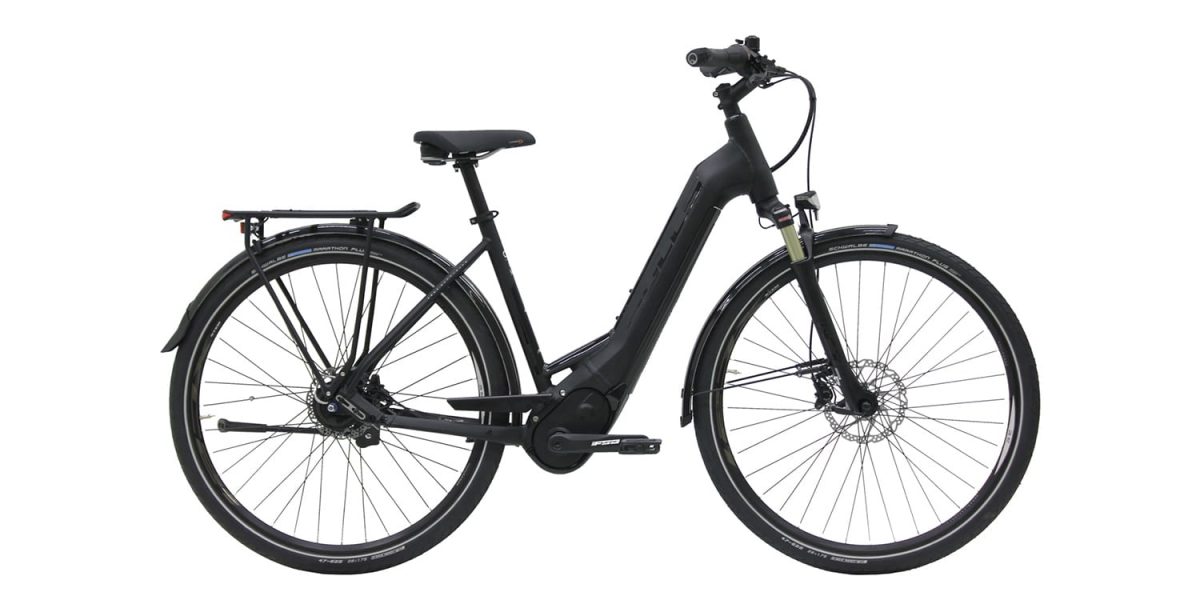

















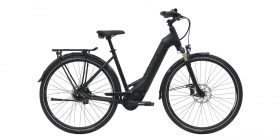
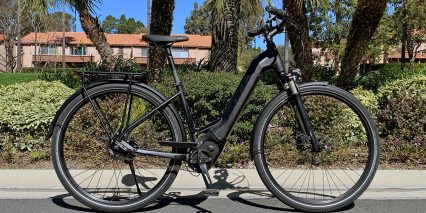
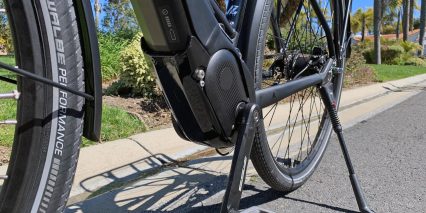
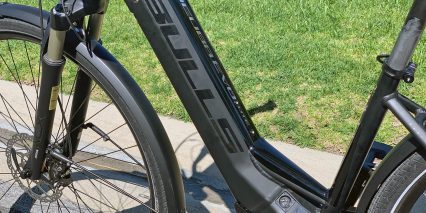
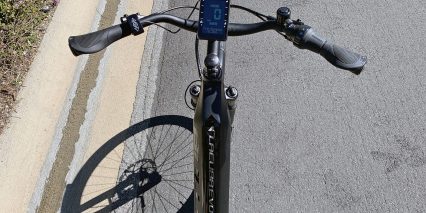
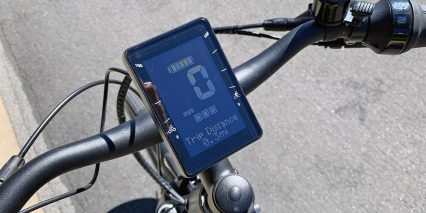
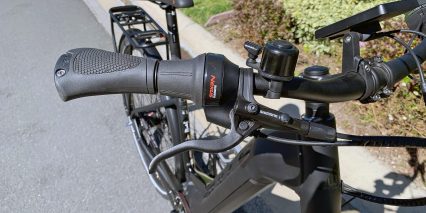
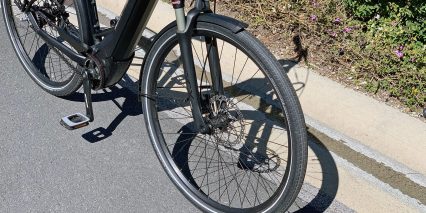
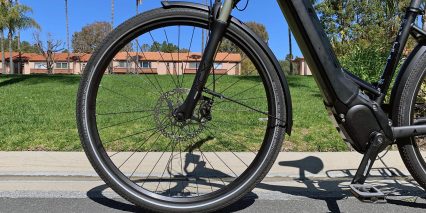
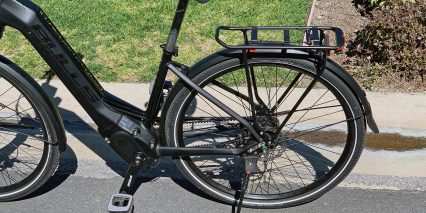

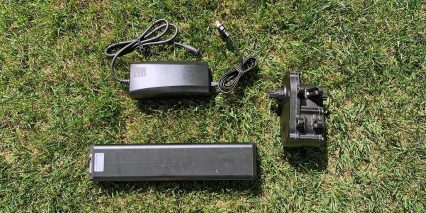
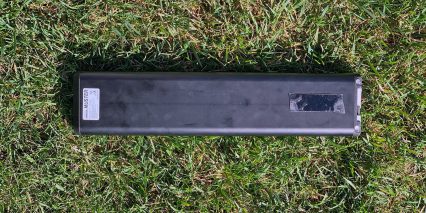
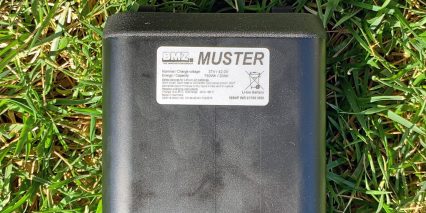
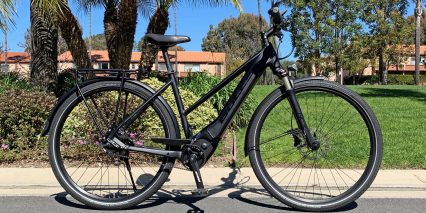
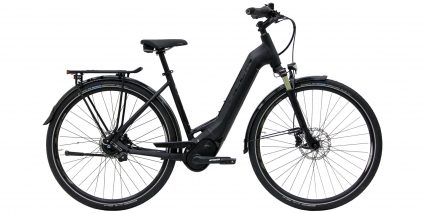
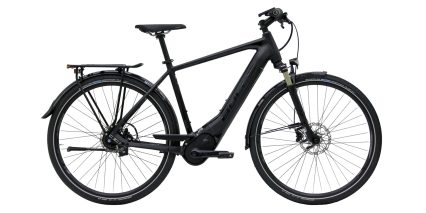
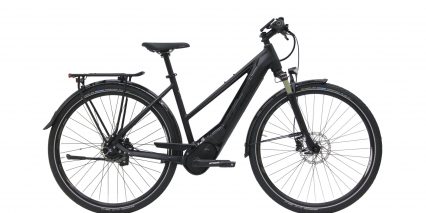

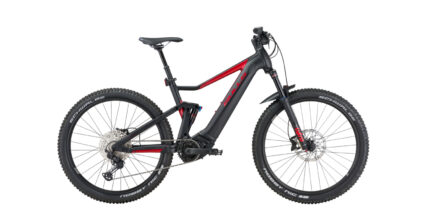

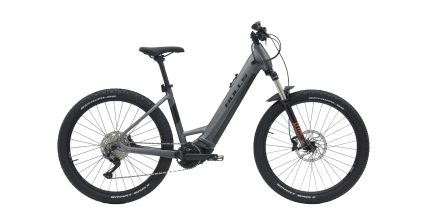
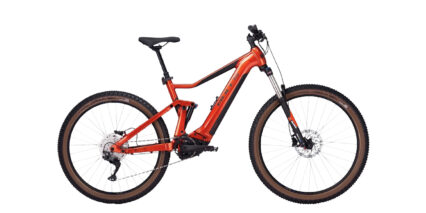
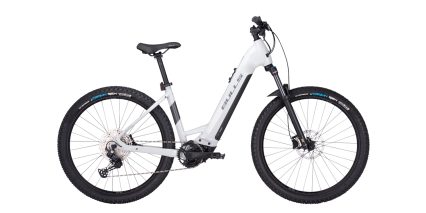
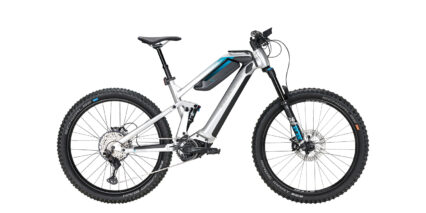
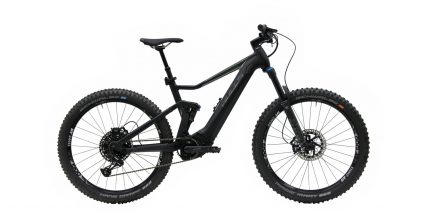

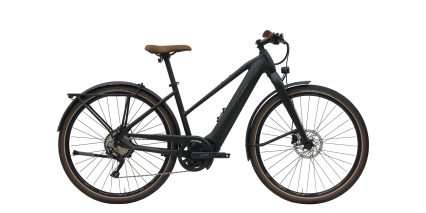
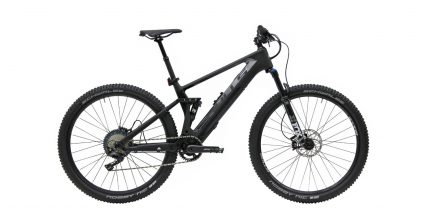

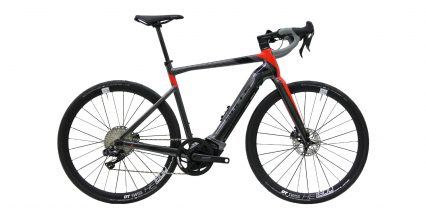
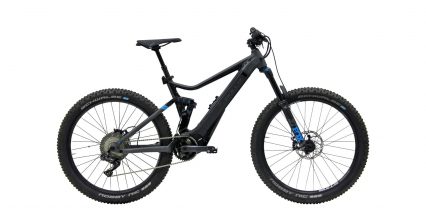
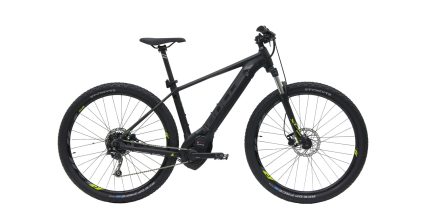
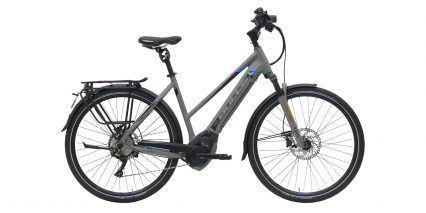
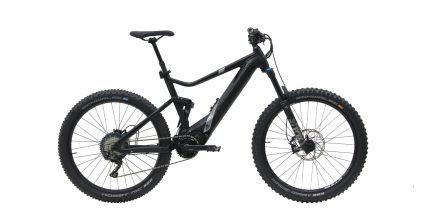
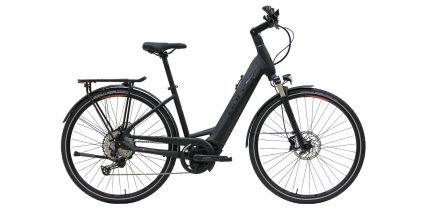
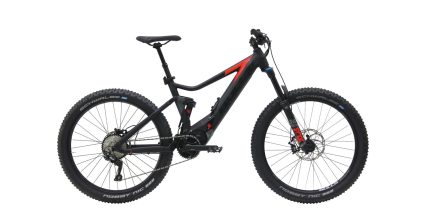
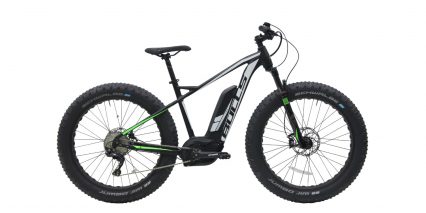
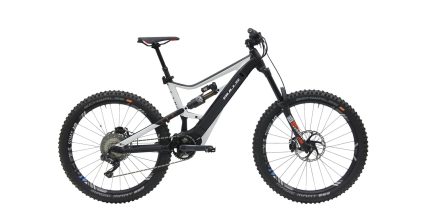
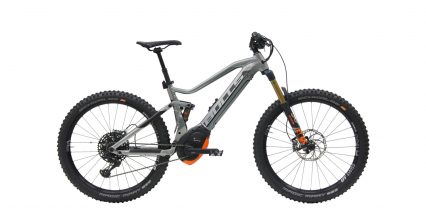
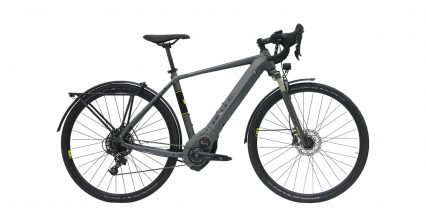
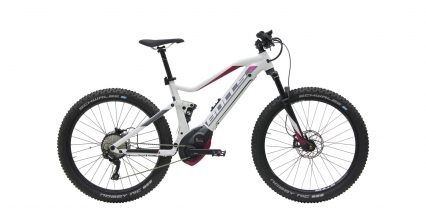
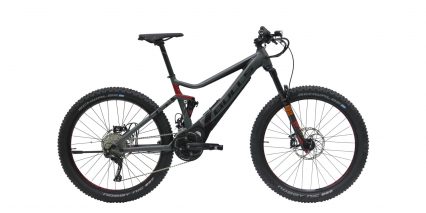
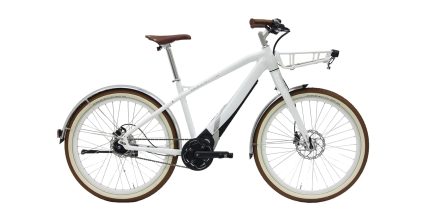
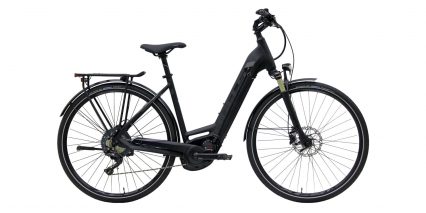
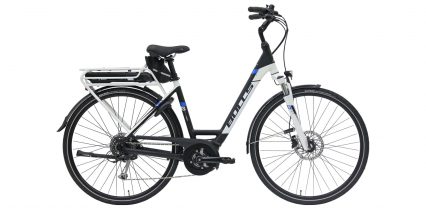
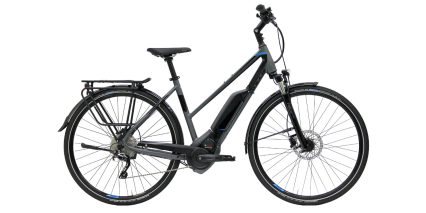
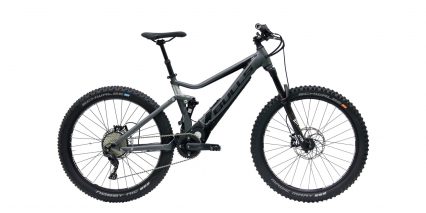
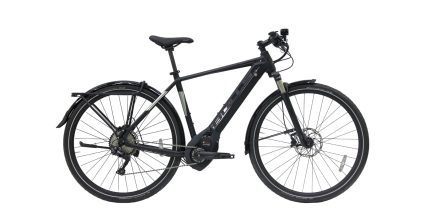
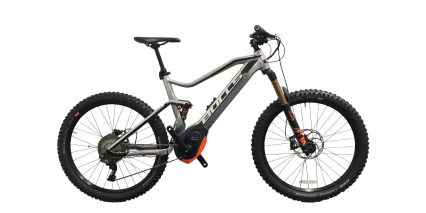
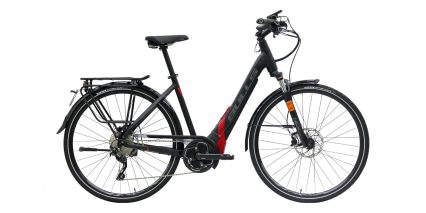
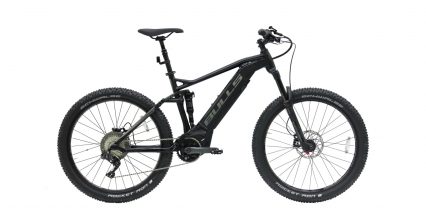

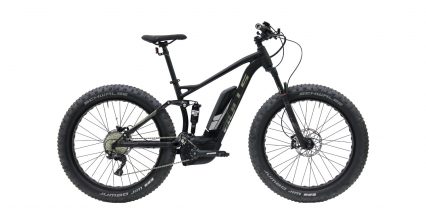

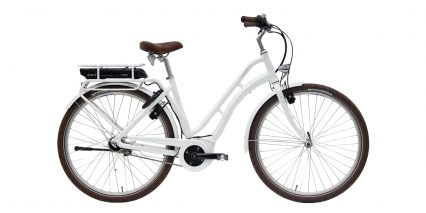
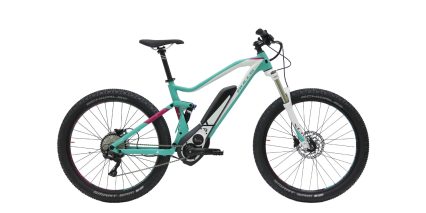
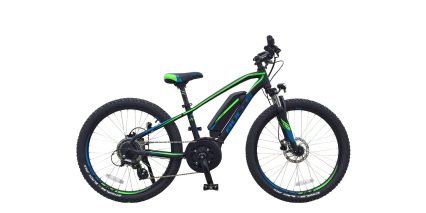
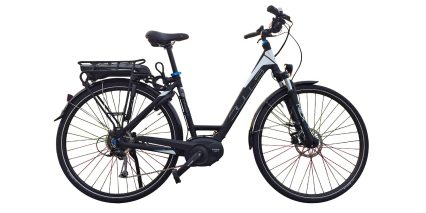
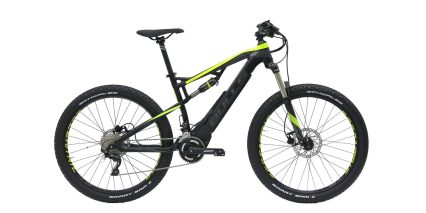
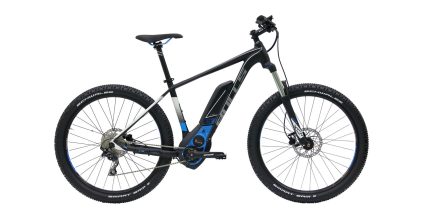
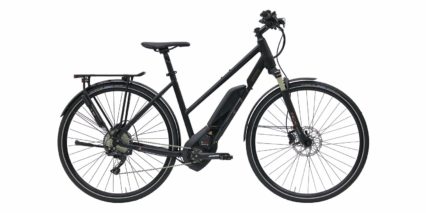
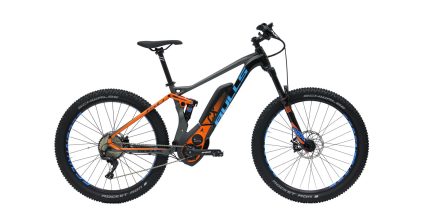
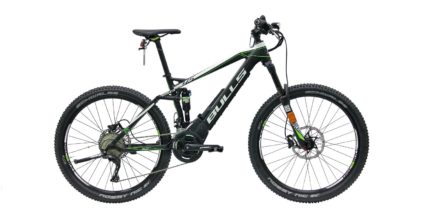
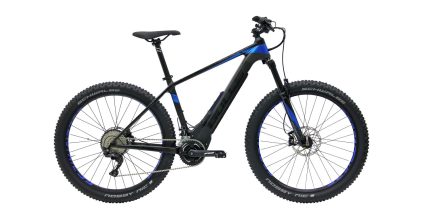
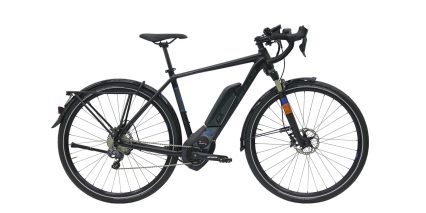
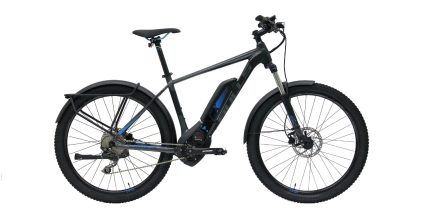

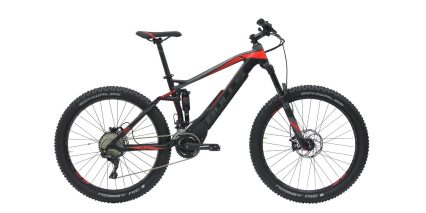
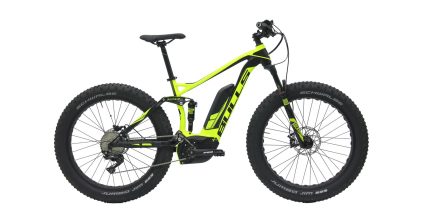
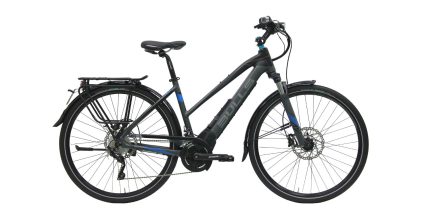
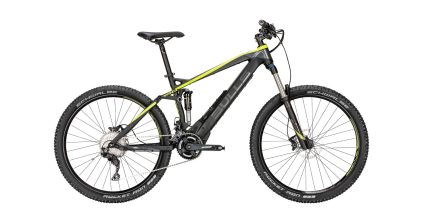


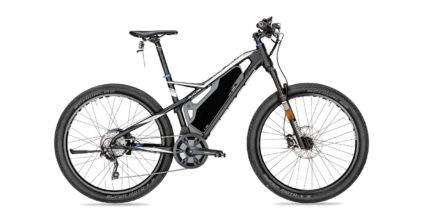
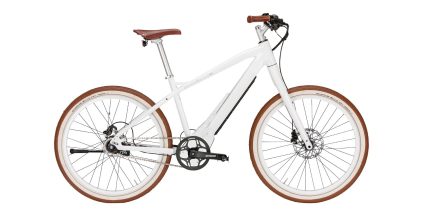
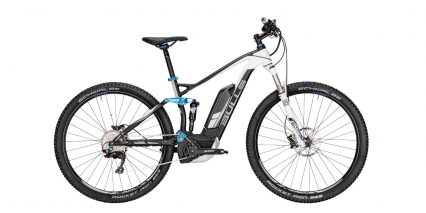
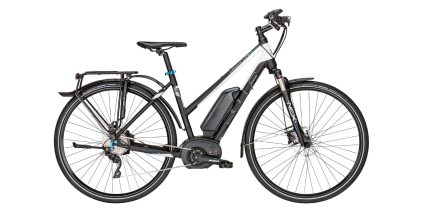
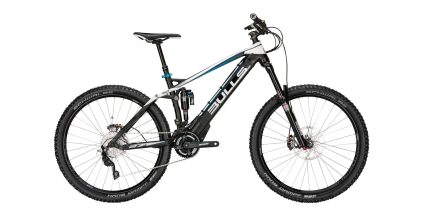
Tom Newell
5 years agoCourt, have you any information on folks installing the Bluetooth Dongle in the Brose Bulls Lacuba Evo Lite bike. My understanding is that it is necessary to get the Connect C app to work.
Thanks for all your good work,
ReplyTom
Court
4 years agoHi Tom! Nope, that’s something I have not been shown. Did you get your BULLS LACUBA EVO LITE from a dealer? Hopefully they know more and can help. I’ve had good experience with the founders and support team (better than average) so try reaching out through the site. You can also ask around the BULLS forums here. I’ve been amazed with the technical help and photos that some users will provide just to help friends. It’s awesome!
ReplyMark
4 years agoI contacted Bulls about availability. They no longer produce bikes using Gates carbon belt. The newer EVO 10 replacement for the Lacuba EVO Lite uses a standard type chain, cassette, and derailleur. In an e-chat with “Joachim,” he said they had to “detune” the Brose motor because its 90Nu of torque was too much for the carbon belt. Is that possible? He also said it might have something to do with the rear internal gear hub. Anyone else heard of such torque issues?
ReplyCourt
4 years agoVery interesting, I hadn’t discussed any of this with staff at BULLS (and I thought belts were actually more reliable than chains) but maybe their driveline wasn’t perfectly straight or maybe the internally geared hubs couldn’t take the high torque. In any case, thanks for sharing Mark! Maybe we’ll get more info from other riders and owners here or the BULLS forums.
ReplyByrun
4 years agoI just tested the Evo 10 today in North Van and compared it to a Gazelle Ultimate C8 I tried out yesterday, and a Dōst Kope the day before in PoCo. Likely not a fair comparison, given the differences in torque, but shifting on the Bulls was very clean and smooth compared to the Dōst (which was a fun bike in its own right, and Gordon is a great guy), which I found a bit clunky by comparison. The belt and internal hub on the Gazelle were really nice once I got used to it, and it really is a selling point, but the Evo 10’s derailleur system still held up, and that 90 Nm of torque really stands out on those North Van hills (especially with a glitchy knee). All that to say, I didn’t find myself missing the belt drive.
Also, the display on Bulls is great, a real step up from the basic Bosch display.
Lew Godlis
4 years agoIm trying to decide between the Lacuba EVO lite and the Lacuba EVO E8. Is the extra $1000+ a smart investment?
ReplyCourt
4 years agoHi Lew, it’s really a close call here. It looks like both have the suspension fork (but I prefer air on the E8 vs. spring here). You’ll get 3 more gears, which can make pedaling more comfortable at different speeds… and may be more reliable over time too because the Nexus 8 is nicer than the 5. If you plan to keep the bike, ride a lot, and appreciate the extra power from the motor (for hauling extra weight etc.) then the $1,000 would be well spent on the upgrade. The bike will just operate a bit better all the way around, in my opinion.
ReplyAlex
3 years agoYou’ll get 3 more gears, which can make pedaling more comfortable at different speeds… and may be more reliable over time too, because the Nexus 8 is nicer than the 5.
Any more details why this is true? I did some research about Nexus-5 and it has some improvements over Nexus-8. 1st gear with 1:1 ratio (instead of 5th on Nexus-8), higher max ratio on 5th (over 8th on Nexus-8), which is great for Class-3 bikes, also improved reliability. Yes, the gear ration on Nexus-5 is somewhat smaller than on Nexus-8, however it is aligned more for the e-bike usage. Riding Gazelle C8 myself, I can definitely say I don’t use 1st gear almost ever, and 1st gear on Nexus-5 is ~ aligned with 2nd on Nexus-8. So, I don’t think Nexus-5 is worse than Nexus-8 for e-bike usage.